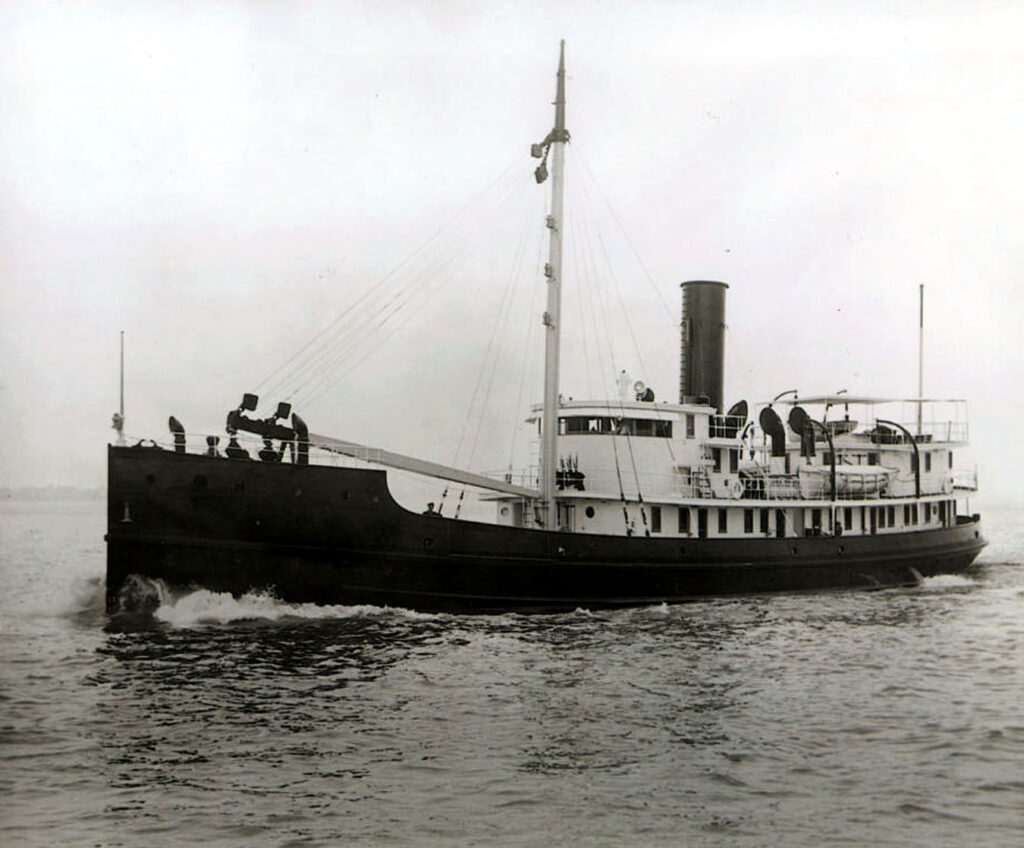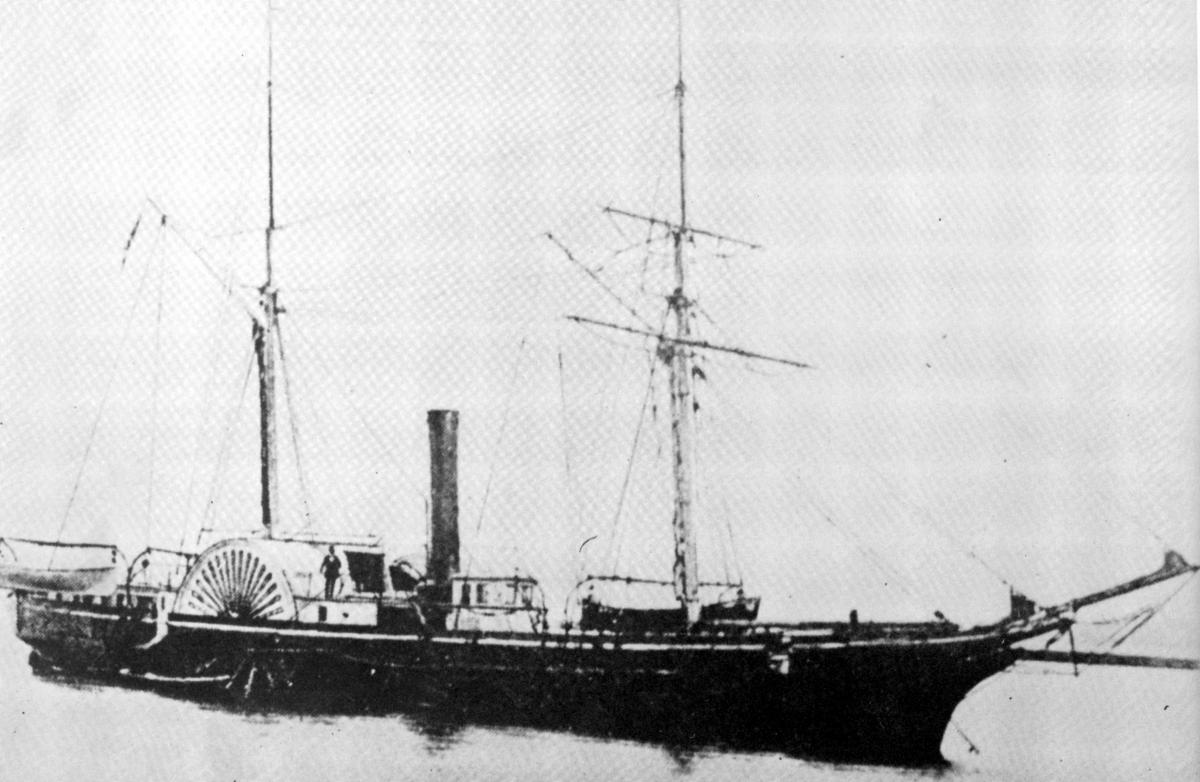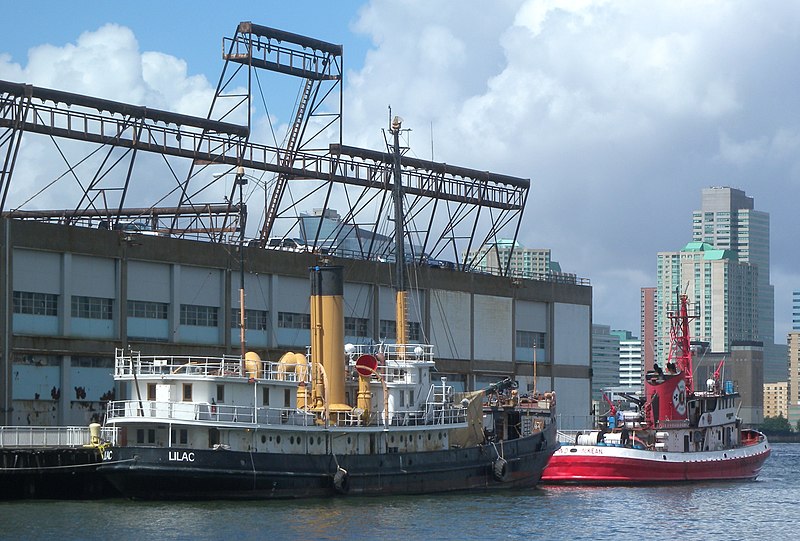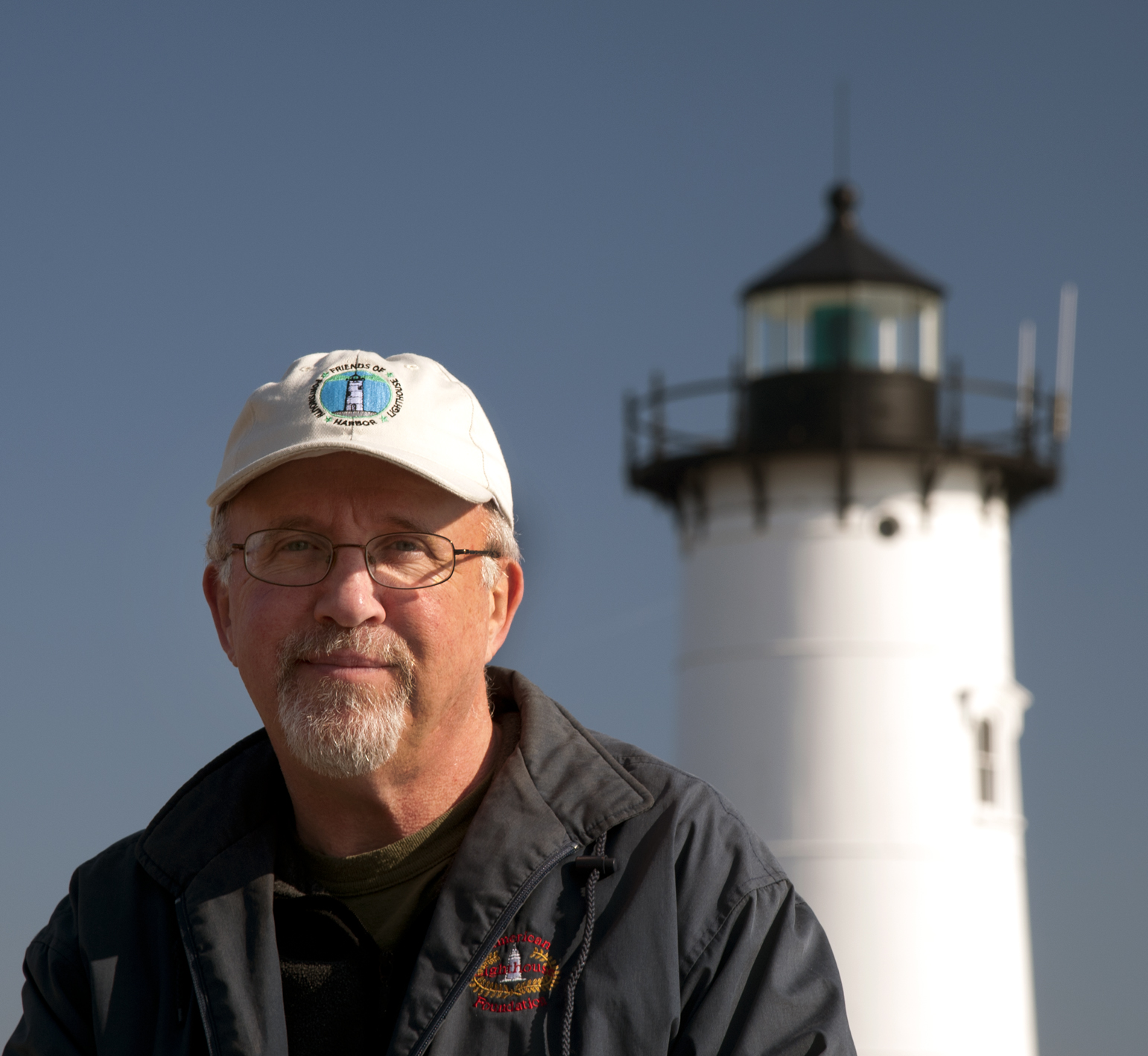
Lighthouse tenders were specifically designed to maintain, support, or tend to lighthouses or lightships by providing supplies, fuel, mail, and transportation. The first American lighthouse tender was the 1831 revenue cutter Rushnourder, which was converted into use as a tender in 1840. The first steam-powered tender was the Shubrick, completed in 1857 and put into service on the West Coast in 1858.

A good source on the subject of lighthouse tenders is the book United States Lighthouse Service Tenders 1840 to 1939 by Douglas Peterson. “They were the forgotten fleet of the federal government,” Peterson wrote. “They did their jobs with little or no fanfare. But they did it well and consistently to the highest standards, and established traditions which are still upheld today. While very little has been documented about these ships, they were the lifeline for lighthouses and lightships, and essential to the support and maintenance of the aids to navigation system. And those aids guided the merchant ships and navies which were the lifeblood and security of our growing nation.”
In the late 1800s and early 1900s, lighthouse tenders and work ships were named for flowers, shrubs, and trees. George Putnam, Commissioner of Lighthouses, was present when the tender Lilac was launched in Wilmington, Delaware, in 1933. Lilac, 174-1/2 feet long with a 32-foot beam, was built to be extremely stable and is equipped with a steam-powered boom that could lift buoys weighing 14 tons or more. Lilac was assigned to the Fourth Lighthouse District covering Delaware Bay and its approaches, north to Trenton, New Jersey.
1939, the Lighthouse Service was dissolved and responsibility for aids to navigation was transferred to the U.S. Coast Guard. Lilac became a Coast Guard cutter until it was decommissioned in 1972. The ship was donated by the Coast Guard to the Seafarers International Union and it became dormitory and classroom space at a school of seamanship in Maryland. It was then privately owned for a while beginning in 1984. It was sold in 2003 to the Tug Pegasus Preservation Project, which served as the temporary steward until the Lilac Preservation Project was formed.

After $250,000 worth of work in Virginia, Lilac was towed to New York City and moved to a berth at Pier 40 in Hudson River Park on New Year’s Eve, 2003. In May 2011, Lilac was moved downtown to the rebuilt Pier 25 in the Tribeca section of the park. The ship is now open to the public on a regular basis.
One of the highlights in 2019 is that for the first time since Lilac was decommissioned, the starboard triple-expansion steam engine was restored to the point of turning over by volunteer cadets from the U.S. Merchant Marine Academy under the supervision of volunteer engineer Jon Zepp. Restoration of this engine took longer than a portside one due to corrosion from a leak in a skylight.
Also in 2019, new volunteer Luke Gayford repaired the main gangway to the ship after damage by a storm in October 2018. His labor saved the Lilac Preservation Project $2,500. Gayford went on to organize a project to install new anodes donated by Caddell Dry Dock and Repair Company, which help to protect the steel hull from corrosion. Donated material from MakerSpace NYC and support from the Downtown Boathouse helped to complete the project.
Lilac hosted 5,088 visitors for educational tours and cultural programs in 2019, in spite of some hot days when the ship remained closed. Visitors included kindergartners who learned about maritime transportation and military veterans who attended a special July 4th program co-sponsored by the Veterans Yoga Project and Hudson River Park.
Stephen Vani was a seaman on Lilac from about 1969 to 1971. In spite of being injured on the job, his love of the ship and the work shines throughout his tales. Videographer Alex Cox recorded the interview below.
Mary Habstritt is the museum director and president for the Lilac Preservation Project. She oversees all the activities of the historic museum ship, including restoration and fundraising. Coming in March will be an interview with Mary on Light Hearted, the U.S. Lighthouse Society’s podcast.
Tenders – The Unsung Heroes by Ralph Shanks Jr.

Jeremy D’Entremont is the author of more than 20 books and hundreds of articles on lighthouses and maritime history. He is the president and historian for the American Lighthouse Foundation and founder of Friends of Portsmouth Harbor Lighthouses, and he has lectured and narrated cruises throughout the Northeast and in other regions. He is also the producer and host of the U.S. Lighthouse Society podcast, “Light Hearted.” He can be emailed at Jeremy@uslhs.org


a lot of memories for me.I was stationed on her sister ship out of Baltimore.CGCViolet from 1959 till Jan. Of 1962.BMCMitchell